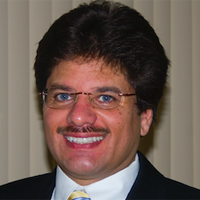Stations ‘In A Groove’ With Remote Workflows
Broadcasters have met the challenge of producing news during COVID-19 by relying on the creativity of their personnel and the flexibility of IP-based technology to develop remote workflows that have allowed the majority of staffers to work from home for the past seven months.
Now that they’ve proven they can deliver a high-quality on-air product with these new techniques, they are in no hurry to make changes as the industry heads into an uncertain winter.
Broadcasters speaking at TVNewsCheck’s TV2025 virtual conference last week said they have grown comfortable with their remote production models, many of which simply built on and accelerated technology initiatives they already had underway. And while they hope to bring more staffers back to their facilities after a COVID-19 vaccine is available and the pandemic subsides, some of the changes they have made are likely long-term.
‘Groove’ Found At ABC Owned Stations

Tish Graham
“First and foremost, from Day One the safety and well-being of our employees was always our first concern, and continues to be our concern,” said Tish Graham, VP of broadcast technology for the ABC Owned Television Stations, speaking on the panel “Remote Workflows & the Future of TV Station Operations,” moderated by this reporter.
Within the first week of COVID-19 lockdowns about 70% of staffers at the ABC Owned stations had shifted to working remotely by relying on cloud-based workflows. The group has largely maintained that ratio, with perhaps 35%-40% of employees now back in the stations.
“We’re operating in a really good place right now,” Graham said. “People have found their groove. The amount of innovation, the amount of work to adapt, not just in our newsrooms, but across technology, finance and traffic, across the broadness of what a television station is…. We’re agile and nimble enough, whether we stay like this for a year or change back.”
No Rush To Return At ABC News
The picture is similar at the ABC network, which has made heavy use of virtualized workflows and remote desktop access software to support editors and producers working from home. The network has brought back some anchors into its broadcast center and added essential production personnel for big events like the presidential debates, but it is basically operating with the same amount of in-house staff as it was in March, said Fabian Westerwelle, executive director, media and technology for ABC News.

Fabian Westerwelle
“Looking back at the last few months, the news cycle has never been busier, and honestly I don’t think we’ve ever done a better job of covering that busy news cycle,” Westerwelle said. “It shows in the ratings, and the amount of work that’s being done day to day.
“Since it’s been going so well given what’s arguably the toughest news environment we’ve seen in a while, there’s not really a rush to change that,” he added. “Obviously COVID is still on many people’s minds, and we’re seeing a lot of increase of numbers across the entire country, so there’s no rush to bring people back into the office.”
For the past few years ABC News has been moving toward an environment that uses “consolidated and centralized compute” in a private data center to run virtualized applications for various functions, Westerwelle said. It has also been moving to a “zero-trust environment” that provides the same level of secure remote access to internal systems from any location.
“Our IT group on the design side and on the networking side have been really hard at work on that, making this transition a lot easier,” Westerwelle said. “For example, for editing we’re relying right now very heavily on virtual machines running [Avid] Media Central. We are hosting those ourselves primarily, but from a concept perspective it is very similar to the cloud.”
Production Cloud Eases Shift For NBCU Owned Stations
The NBCUniversal Owned Television Stations were able to leverage their own major technology initiative — called the “production cloud” — to make shifting to remote workflows easier. Under that project, the NBCU group has created a private data center in Dallas at KXAS-KXTX to support virtualized production operations at its smaller stations, which connect to the equipment in Dallas over high-speed fiber links. Telemundo station KBLR Las Vegas was the first to start using the production cloud last year, and the group plans to launch two more stations on the platform this year.

Brad Plant
Brad Plant, director of technology and operations for NBCUniversal Owned Television Stations, said the group’s experience with separating hardware from being in the same physical location as the operators using it has been a big help in dealing with COVID-19. At the same time, it has been easier to get “buy-in” from more personnel on the merits of virtualization.
“COVID helped us adapt a little quicker,” Plant said. “Las Vegas is a great example. They were one of the first to get out of the building and do full newscasts from home. Because they were already used to a state of mind where their control room is a bunch of computers and monitors, there’s no physical equipment in there.”
Each Gray Station Like Its Own Cloud
Gray Television is another group that found the move to remote workflows relatively smooth based on the technology foundation it had already laid before COVID-19. Gray’s stations are heavily automated, using systems like Ross OverDrive to control camera robotics, templated graphics and audio mixing from a single control room that runs traditional newscasts and is also flexible enough to feed digital platforms and oversee master control functions.
Each Gray station is set up like its own cloud, said Mike Fass, VP broadcast operations for Gray Television, which allows production control to easily be run from another location in the building or even remotely. Gray stations were therefore able to migrate quickly to remote operations with a few simple modifications.

Mike Fass
“By late March, early April we had stations directing full newscasts from home and running master control from home, both in big and large markets, because the technology was there,” Fass said. “I give huge kudos to the stations for the creative innovation that happened so fast, and workflows invented so fast. A lot of those workflows are still in place, and probably will be for the foreseeable future.”
One of the big initial challenges was providing communications from the station back to producers and anchors working from home. Gray has leaned heavily on Unity IP intercom systems. It’s also come up with some creative solutions for monitoring. One is taking the SDI output of a multiviewer and feeding it to a BlackMagic Web Presenter, putting that up on a desktop computer at a TV station, and then giving stations access to that via screen-sharing software like TeamViewer or Splashtop or by routing it to a Microsoft Teams channel.
“It works really well, and we have stations still doing that exact thing,” Fass said.
No Huge Leap For Hearst
Hearst Television’s reporters and photographers have already been doing laptop editing in the field and file-based contribution for years, so moving to remote workflows wasn’t a huge leap, said Joe Addalia, director of technology projects for Hearst. One wrinkle, however, was that those staffers were still used to returning to the station to dump raw video over wired connections into a central storage server. Using Wi-Fi in a parking lot to accomplish the same task from multiple laptops was challenging, so Hearst came up with some workarounds, such as creating secure wired connections outside the building.

Joe Addalia
One group that found remote work more challenging were the artists in Hearst’s Orlando graphics hub, who initially tried to use remote desktop software to work with the high-powered HP workstations at that facility. Given the latency of connecting to those workstations over a broadband connection, however, they found that connecting remotely “wasn’t tight enough” for the intricate graphics creation they needed to do. So Hearst brought the big HP Z8 workstations and accompanying monitors to their houses and set them with VPN connections, effectively creating a virtual graphics hub.
Now Hearst is considering what happens after the pandemic subsides and those artists are free to return to the facility. The group isn’t sure that it should necessarily use the same technology. It is considering buying laptops with high-powered graphics chips, or perhaps setting up a pool of virtualized computing power that can better support remote access via thin clients.
“Today you have 25 people and they’re all remote and they’re all working fine and doing a fantastic job, as always,” Addalia said. “But now we’re starting to look at tomorrow, when the cloud lifts and we’re able to come back to the facility, what does that look like and how do we equip our people? And the thing we’ve taken an interesting view of is do these workstations really need to be workstations, first of all, and do we need to have one per user?”
Field Contribution Going ‘Through The Roof’
Content sharing between stations and contribution from the field “has gone through the roof” in 2020 among Bitcentral customers due to COVID-19’s challenges, said Fred Fourcher, founder and CEO of the news production software vendor. Fourcher said one large station group that uses Bitcentral’s Oasis asset management system had shared an average of 22,000 stories per month in 2019, and this year is now sharing around 33,000 stories per month.

Fred Fourcher
“What’s great about that is this is content that is unique to the group, and a lot of it are stories that are shared regionally that you otherwise wouldn’t get from a national news service,” Fourcher said. “It’s content that the viewers wouldn’t see coming in their feed from CNN or their network news service.”
Field contribution through Oasis saw an even bigger relative spike for this group, going from about 8,000 stories per month up to 20,000. Fourcher said that’s because the “buy-in” problem got solved quickly by COVID-19 — journalists who had previously been reluctant to use the remote, file-based workflow to submit their stories now had no alternative.
“Again, this is a matter of necessity,” Fourcher said. “But going forward, when you think about, the news doesn’t happen in the TV station, it happens in the field. The more time reporters can spend in the field, doing the work reporters do, the better. And so driving back to the station, we’re breaking them from that habit, where [now] they can essentially do multiple turns and stay in the field covering more news. That’s a good thing.
Executives from ABC Owned Stations, Hearst, ABC News, Gray, NBCU Owned Stations and Bitcentral say seven months into the pandemic, remote workflows are running smoothly and more permanent changes to their operations are pulling into… Click To Tweet“If there’s a positive upside [from COVID-19], it’s that we’ve created a more field-centric workflow by default, which I think will result in more efficient news production and newsgathering in the future.”
Read more TV2025 coverage here.
































Comments (0)